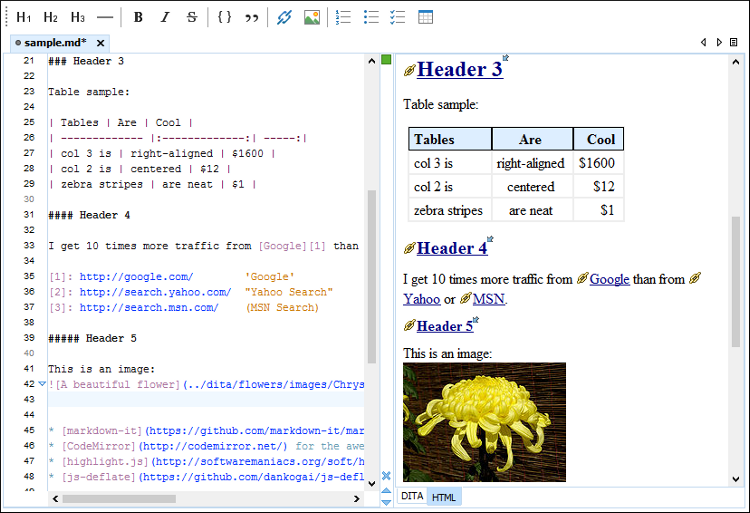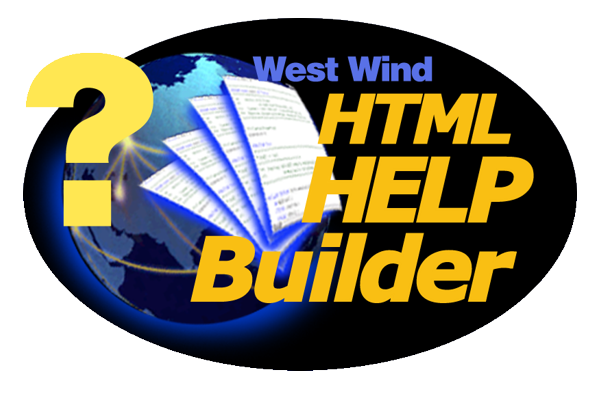An Introduction to Markdown (Bonus Markdown Templates Included)
An Introduction to Markdown (Bonus Markdown Templates Included)

One Paragraph of project description goes here These instructions will get you a copy of the project up and running on…github.com
Basic Syntax Guide
This topic is meant to give you a very basic overview of how Markdown works, showing only some of the most common operations you use most frequently. Keep in mind that you can also use the Edit menus to inject markdown using the toolbar, which serves as a great way to see how Markdown works. However, Markdown’s greatest strength lies in its simplicity and keyboard friendly approach that lets you focus on writing your text and staying on the keyboard.
What is Markdown
Markdown is very easy to learn and get comfortable with due it’s relatively small set of markup ‘commands’. It uses already familiar syntax to represent common formatting operations. Markdown understands basic line breaks so you can generally just type text.
Markdown also allows for raw HTML inside of a markdown document, so if you want to embed something more fancy than what Markdowns syntax can do you can always fall back to HTML. However to keep documents readable that’s generally not recommended.
Basic Markdown Syntax
The following are a few examples of the most common things you are likely to do with Markdown while building typical documentation.
Bold and Italic
markdown
This text **is bold**.
This text *is italic*.This text is bold.
This text is italic.
Header Text
markdown
# Header 1
## Header 2
### Header 3
#### Header 4
##### Header 5
###### Header 6Header 1
Header 2
Header 3
Header 4
Header 5Header 6
Line Continuation
By default Markdown adds paragraphs at double line breaks. Single line breaks by themselves are simply wrapped together into a single line. If you want to have soft returns that break a single line, add two spaces at the end of the line.
markdown
This line has a paragraph break at the end (empty line after).Theses two lines should display as a single
line because there's no double space at the end.The following line has a soft break at the end (two spaces at end)
This line should be following on the very next line.This line has a paragraph break at the end (empty line after).
Theses two lines should display as a single line because there’s no double space at the end.
The following line has a soft break at the end (two spaces at end)
This line should be following on the very next line.
Links
markdown
[Help Builder Web Site](http://helpbuilder.west-wind.com/)If you need additional image tags like targets or title attributes you can also embed HTML directly:
markdown
Go the Help Builder sitest Wind site: <a href="http://west-wind.com/" target="_blank">Help Builder Site</a>.Images
markdown

Block Quotes
Block quotes are callouts that are great for adding notes or warnings into documentation.
markdown
> ### Headers break on their own
> Note that headers don't need line continuation characters
as they are block elements and automatically break. Only text
lines require the double spaces for single line breaks.Headers break on their own
Note that headers don’t need line continuation characters as they are block elements and automatically break. Only text lines require the double spaces for single line breaks.
Fontawesome Icons
Help Builder includes a custom syntax for FontAwesome icons in its templates. You can embed a @ icon- followed by a font-awesome icon name to automatically embed that icon without full HTML syntax.
markdown
Gear: ConfigurationConfiguration
HTML Markup
You can also embed plain HTML markup into the page if you like. For example, if you want full control over fontawesome icons you can use this:
markdown
This text can be **embedded** into Markdown:
<i class="fa fa-refresh fa-spin fa-lg"></i> Refresh PageThis text can be embedded into Markdown:
Refresh Page
Unordered Lists
markdown
* Item 1
* Item 2
* Item 3
This text is part of the third item. Use two spaces at end of the the list item to break the line.A double line break, breaks out of the list.- Item 1
- Item 2
- Item 3
This text is part of the third item. Use two spaces at end of the the list item to break the line.
A double line break, breaks out of the list.
Ordered Lists
markdown
1. **Item 1**
Item 1 is really something
2. **Item 2**
Item two is really something elseIf you want lines to break using soft returns use two spaces at the end of a line.- Item 1 Item 1 is really something
- Item 2
Item two is really something else
If you want to lines to break using soft returns use to spaces at the end of a line.
Inline Code
If you want to embed code in the middle of a paragraph of text to highlight a coding syntax or class/member name you can use inline code syntax:
markdown
Structured statements like `for x =1 to 10` loop structures
can be codified using single back ticks.Structured statements like for x =1 to 10 loop structures can be codified using single back ticks.
Code Blocks with Syntax Highlighting
Markdown supports code blocks syntax in a variety of ways:
markdown
The following code demonstrates: // This is code by way of four leading spaces
// or a leading tabMore text hereThe following code demonstrates:
pgsql
// This is code by way of four leading spaces
// or a leading tabMore text here
Code Blocks
You can also use triple back ticks plus an optional coding language to support for syntax highlighting (space injected before last ` to avoid markdown parsing):
markdown
`` `csharp
// this code will be syntax highlighted
for(var i=0; i++; i < 10)
{
Console.WriteLine(i);
}
`` `csharp
// this code will be syntax highlighted
for(var i=0; i++; i < 10)
{
Console.WriteLine(i);
}Many languages are supported: html, xml, javascript, css, csharp, foxpro, vbnet, sql, python, ruby, php and many more. Use the Code drop down list to get a list of available languages.
You can also leave out the language to get no syntax coloring but the code box:
markdown
`` `dos
robocopy c:\temp\test d:\temp\test
`` `dos
robocopy c:\temp\test d:\temp\testTo create a formatted block but without formatting use the txt format:
markdown
`` `txt
This is some text that will not be syntax highlighted
but shows up in a code box.
`` `which gives you:
text
This is some text that will not be syntax highlighted
but shows up in a code box.If you found this guide helpful feel free to checkout my github/gists where I host similar content:
Web Developer, Electrical Engineer JavaScript | CSS | Bootstrap | Python | React | Node.js | Express | Sequelize…github.com
Or Checkout my personal Resource Site:
Comments
Post a Comment
Share your thoughts!